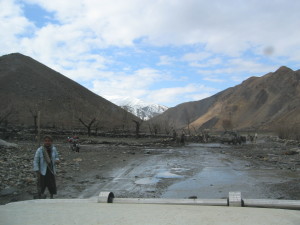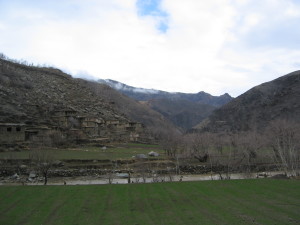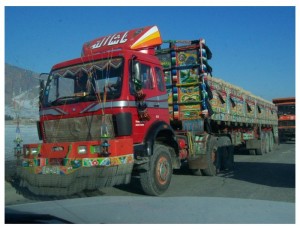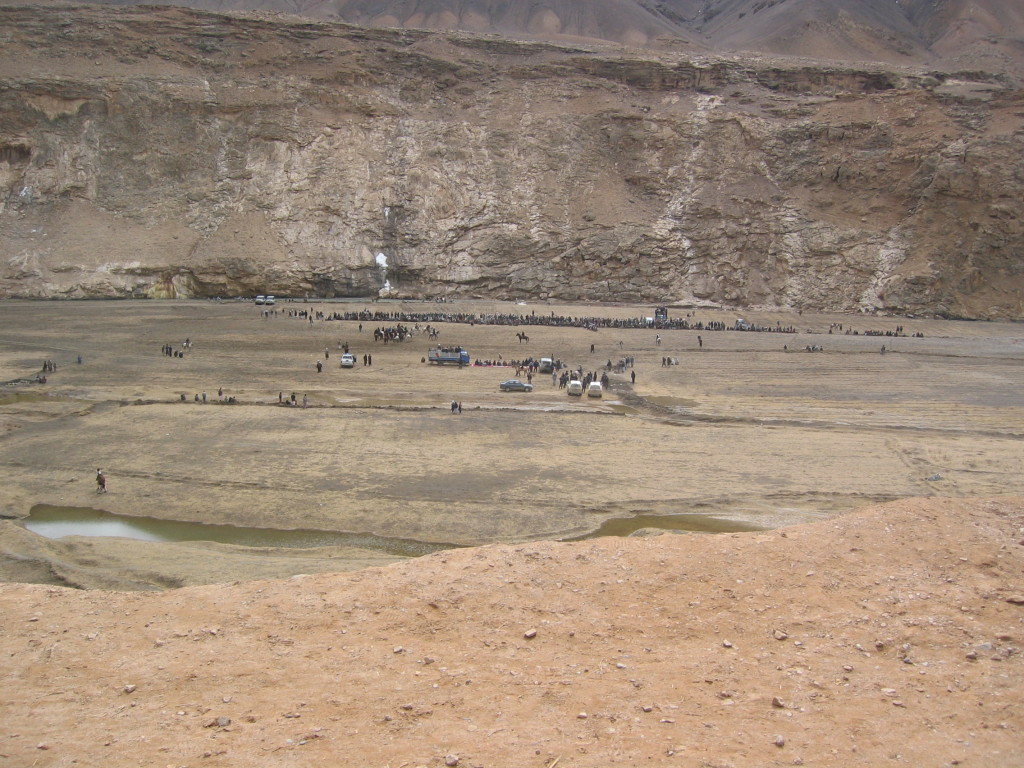Tag Archives for " Afghanistan "
From Afghanistan, with Love
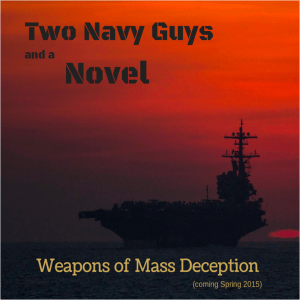 Welcome back to Two Navy Guys and a Novel, the blog series where you get to watch two ex-Navy officers write a military thriller. Previous episodes are available on our web page.
Welcome back to Two Navy Guys and a Novel, the blog series where you get to watch two ex-Navy officers write a military thriller. Previous episodes are available on our web page.
We've received a ton of great feedback from our team of beta readers and are happily doing another round of cosmetic surgery on our novel Weapons of Mass Deception.
This week we're back from a vacation and flu-induced holiday with another sea story from JR. Take it away JR:
Back in December 2004, I was given one of the most challenging assignments of my career: to “rebuild” a completely non-existent U.S. Navy Human Intelligence (HUMINT) collection capability The navy had given up its HUMINT capability in the mid-90s when it was absorbed by the Defense Intelligence Agency – people, units, everything. But the events of 9/11, and the subsequent combat operations revealed a need for intelligence derived from human sources, in the battle space, to support small unit operations. Think Navy SEALs, Explosive Ordnance Disposal (EOD), and a host of other missions.
I made the case I needed to head into a combat zone – either Afghanistan or Iraq – to directly assess the HUMINT support needs for the navy forces operating forward in those theaters. Afghanistan was approved.
Meet The Beard
Even before I received my orders to go to Afghanistan, I started to grow my beard so I would blend in with the local population. Well, “blend in” might be a stretch. I come from Swedish-descent “Viking” stock and my beard is a golden-red color, but I figured it would at least give me a little “cover” with the Pashtun, Tajik, and Haraza tribesman in the mountains of Afghanistan during my month-long research mission.
So, I started growing the beard. And the itching soon followed. The memory of three months of near-constant scratching as my hyper-curly red beard grew were enough to swear off beard-growing for the rest of my life!
I departed Oceana Naval Air Station in mid-February after going through some refresher training at Dam Neck Naval Base with our standard issue weapons. While I am a pretty decent shot, it’s always a good idea to refresh one’s muscle memory for taking aim, smoothly squeezing the trigger, and guiding your round to center of mass of your target. Remember, you cannot miss fast enough. So, smooth, calm, controlled firing, that’s the trick to maximizing the effective use of your available ammunition.
At least that’s what they tell me; I’ve never been in a real firefight.
Afghanistan
We jetted over to Germany, refueled, and then continued to Bagram Air Base, arriving around 1AM local time. Amazingly enough, the first thing we had to do on arrival was NOT to be assigned quarters, but rather to receive a full set of briefings to familiarize all of us with safety items, what was allowed and not allowed, and to explain the nuances of service on the ground in this theater.
Afghanistan in mid-February 2005 was a LOT different than Iraq at that time. While a full-blown insurgency boiled over in Iraq, Afghanistan was fairly quiet. In Iraq, the U.S. Army was relearning a host of lessons they’d forgotten since Vietnam. In Afghanistan, it was still about keeping things in check while the big fight in Iraq continued.
Eventually, we were assigned our sleeping quarters and me and my “bodyguard,” who shall remain nameless to protect his identify, were given a prime spot – not far from the head (toilets) and the showers. That means we did not have to walk as far in the night to take a leak, which was merciful considering the outdoor temperature that time of the year. Mid-February in Bagram was pretty damned cold, especially at night, when the wind pushed down from the snow-capped mountains.
It took us a couple of days to adapt to the “battle rhythm” of the troops in the combat zones. You see, even though the combat forces are deployed to the far reaches of the planet, everyone still falls in line behind the Commander-in-Chief, which means the daily schedule is sequenced to when the President and Secretary of Defense are awake and enjoying their first cup of coffee in the morning. They receive daily briefings from the field based on THEIR schedules, not on the schedules of the thousands of military personnel in the combat zones. So, Bagram, being some eight hours ahead of DC, we had to sequence all operations to DC-time.
When I finally had my feet under me (meaning I could think straight after being thrown half out of my normal Circadian rhythm), the first stop in my review was the headquarters for the Joint Special Operations Task Force, or JSOTF. It was there I received permission to sit side-saddle with the U.S. Navy SEAL team deployed to the theater. I spent the better part of two days watching their intel team gather information from the field, and from national resources. It gave me great confidence in the future of naval intelligence as I watched those young officers and enlisted intelligence specialists “do their thing.” The dedication and professionalism those kids demonstrated —and most of them were only in their early twenties–was impressive.
Find. Fix. Finish
In between the fast-moving operations, I was able to pick their brains about what kind of HUMINT assets would best serve the SEALs while deployed. I learned much. I also spoke with the Explosive Ordnance Disposal (EOD) guys and the SEALs themselves. The “operators,” as they are commonly called, had great insights into how HUMINT would assist them in their operations to “Find, Fix, Finish, and then Exploit” insurgents in Afghanistan. The goal was not necessarily to kill anyone, but rather to capture Taliban or al Qaeda militants, break the back of the insurgency, and allow Afghanistan’s infant central government to establish itself so it could begin to govern the nation.
An old adage of warfare is that dead enemy troops cannot provide much intel, so, if possible, you want to capture them. But, in this fight, that was often hard to do. Most insurgents were “true believers” and preferred to die rather than be captured. Still, for those who were captured HUMINT capability would also mean having trained interrogators who could question the captured men, using reliable and legal methods, which could directly support follow-on operations.
I spent a couple more weeks bouncing around between some of the outposts in the theater, to include a few days at Asadabad, and about five days at Jalalabad, mostly because helo airlift couldn’t get us back to Bagram due to other commitments and weather. By the time I returned to Bagram, I had almost all of the information I needed to build a very thorough assessment of HUMINT capability needs in support of naval expeditionary forces ashore, in a combat zone. And, after all, you ONLY build military forces and capabilities to respond to the worst-case scenario – war. If we built military forces for the easy stuff, we’d get slaughtered when we went to war.
An Unexpected Assignment
I was about a week away from my scheduled return flight when I was asked to join an International Security Assistance Force (ISAF) mission. Why me? Because I was a Lieutenant Commander who had no specific duties to support the ongoing combat operations. Not only that, but joining the ISAF team, and the Afghani Ministry of Interior (MoI) personnel (think FBI, but more heavily armed and with greater latitude for how they interacted with internal security threats), would give me further insights into the situation U.S. and NATO forces faced in coordinating with the local population and trying to defeat the insurgents.
For this particular ISAF mission, we (me and my bodyguard) would be joining a small team from the ISAF headquarters in Kabul and a fairly large team of Afghani MoI troops in a trip out to the Parwan Province, north and west of Kabul and Bagram. I was also given a small contingent of other U.S. Navy personnel to help with the mission. The local warlord in the area had decided to join with the central government, and as part of the agreement he was willing to hand over a large stockpile of weapons. These weapons were mostly very old – from the days of the Mujahideen fight against the Soviets.
There was one catch: we had to go pick up the weapons.
I'll Never Look at Goats the Same Way Again
Our trip by convoy took us from Bagram north along the main A76 road north through Charikar and then to Jabal-os-Saraj. It was there we met with the local Afghan police commander – a brigadier general who reminded me of one of the characters from the David Lean epic Lawrence of Arabia. As we arrived at his police headquarters, there were skinned goats hanging from the rafters of the building, which was right on the main A76 road. And, yes, you guessed it, the skinned goats, their meat fully exposed, were covered in dust – and flies…
We met with the general, enjoyed tea and biscuits, and then were told we would lunch there as the drive out to the far reaches of the Parwan Province would take some time. The menu for lunch? Freshly butchered goat on a skewer. The foreigners in the group downed what we could of the grisly, chewy stuff, but all any of us could think about as we ate were the skinned goat carcasses hanging from the rafters outside. Sometimes, dealing with foreign customs in a strange land can be a bit of a challenge to one’s sense of propriety.
Convoy!
When we finished our meal, we embarked on the roughest, longest, possibly most dangerous car ride I have ever been on. There were now about a dozen vehicles – all four-wheel drive – intermixed with a procession of 30 large “Jingo” trucks, which was the local slang for these vehicles. Also called “jingle” trucks, these are locally-owned, heavily decorated heavy duty transports. The Jingos would haul out the weapons and ammunition surrendered by the warlord.
It took us four hours of driving over these roads before we finally reached the warlord’s encampment. When we arrived above the encampment, we drove slowly down a long road that overlooked a large valley full of dried-out grass. Below, there must have been hundreds, perhaps a thousand, people gathered to greet us.
My first thought was, “If this goes sideways, we’re screwed.”
Tune in next week, when JR finishes his story.
David Bruns is the creator of the sci-fi series The Dream Guild Chronicles, and one half of the Two Navy Guys and a Novel blog series about co-writing the military thriller, Weapons of Mass Deception. Check out his website for a free sample of his work.


